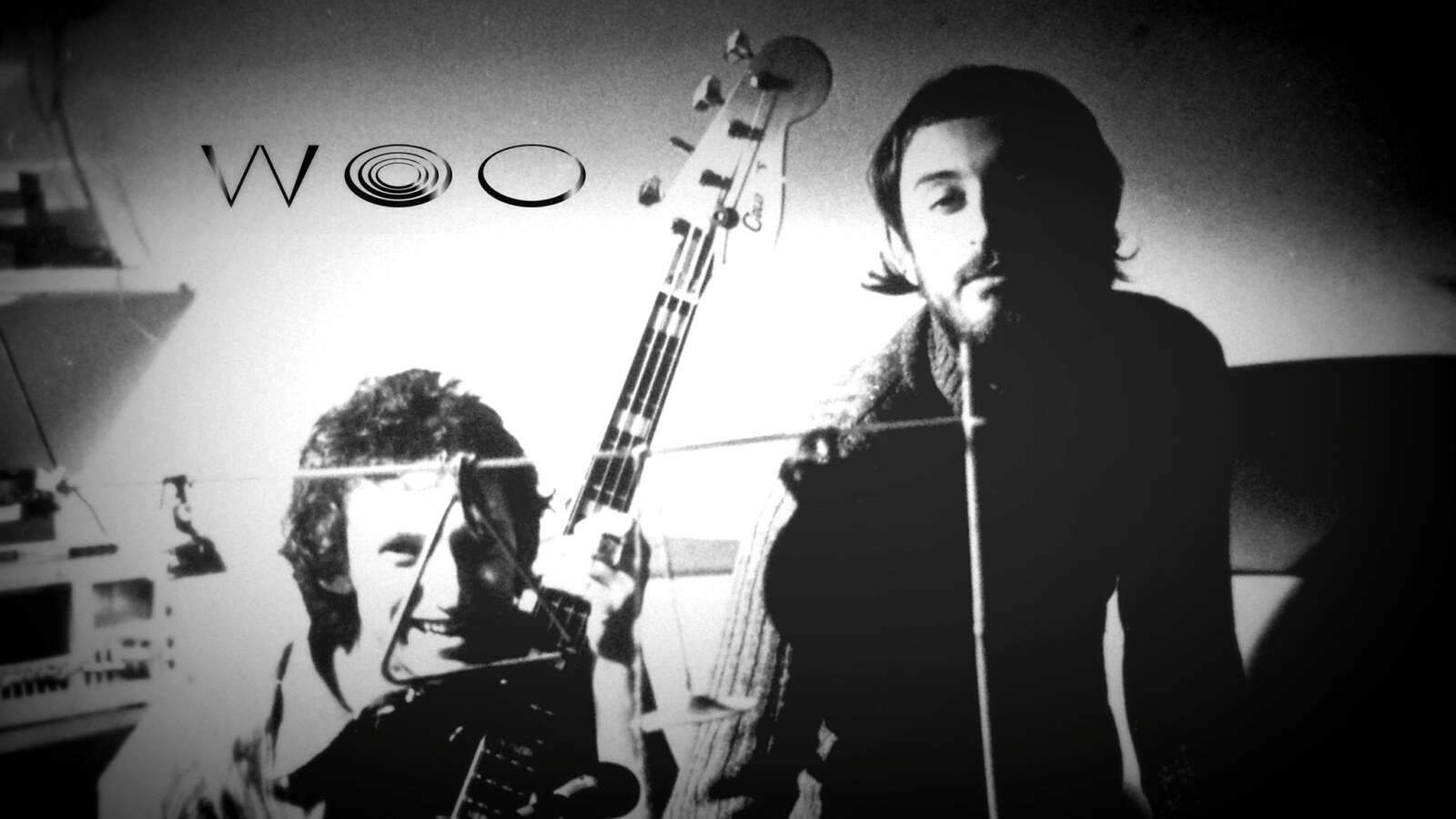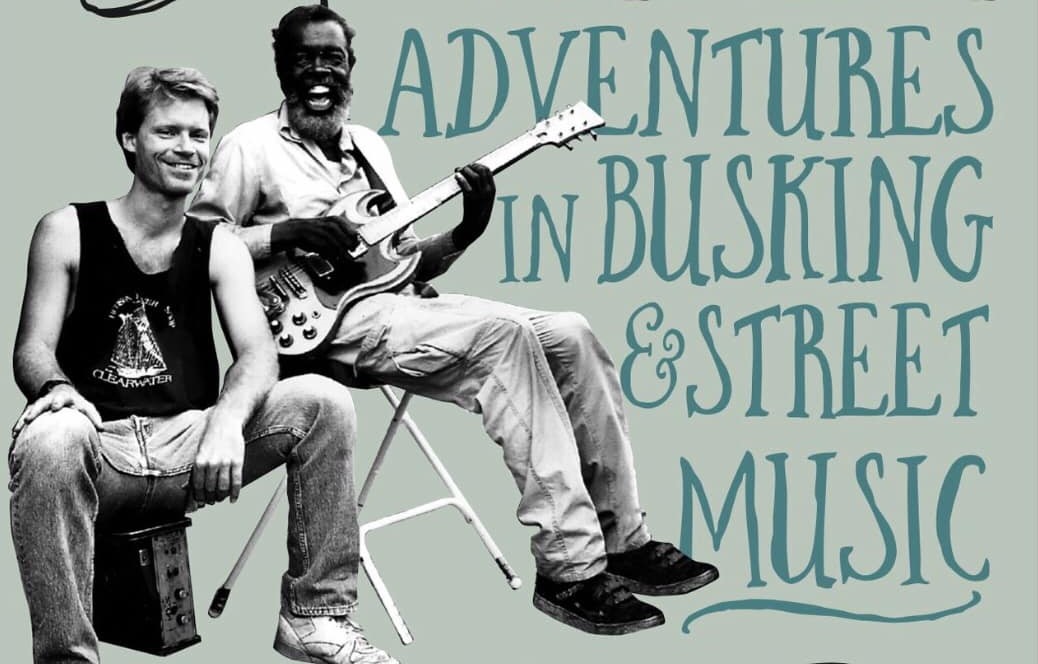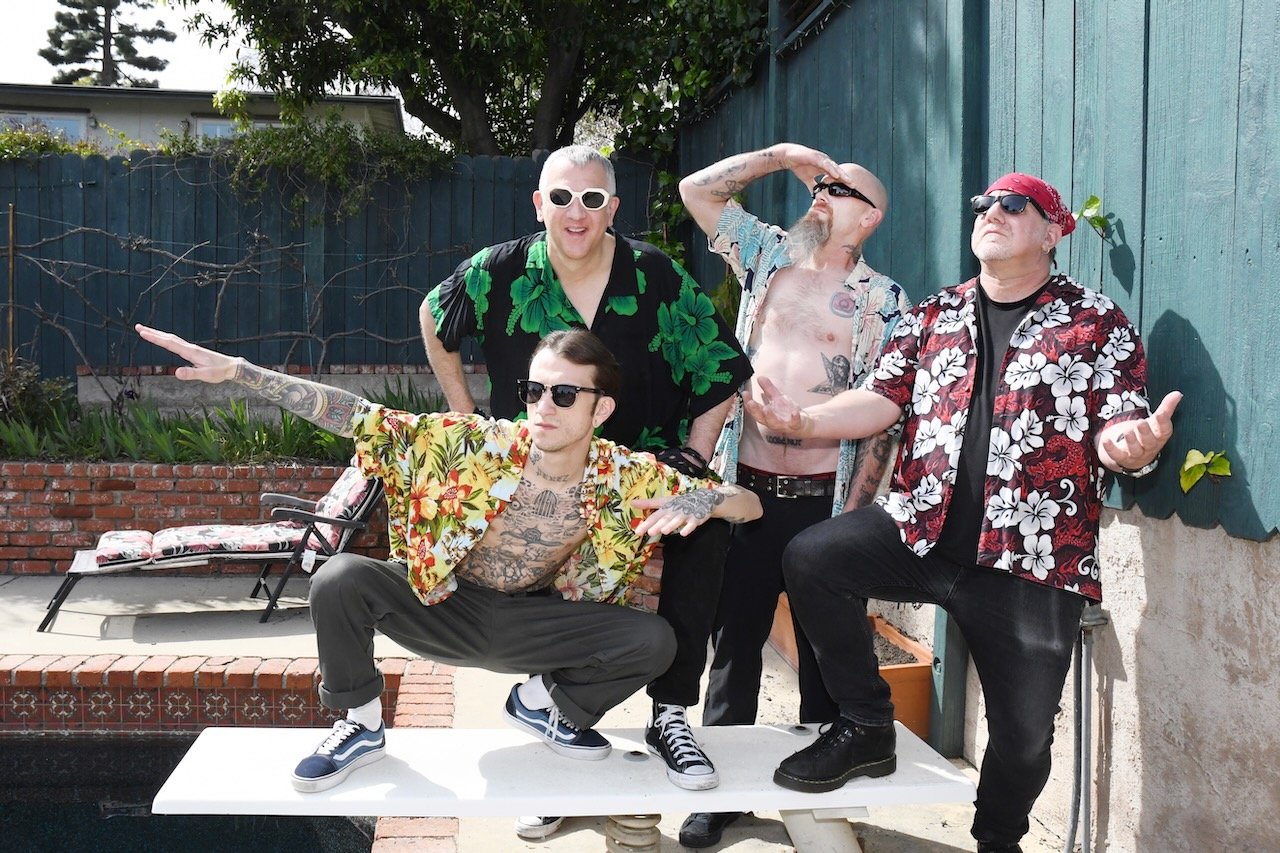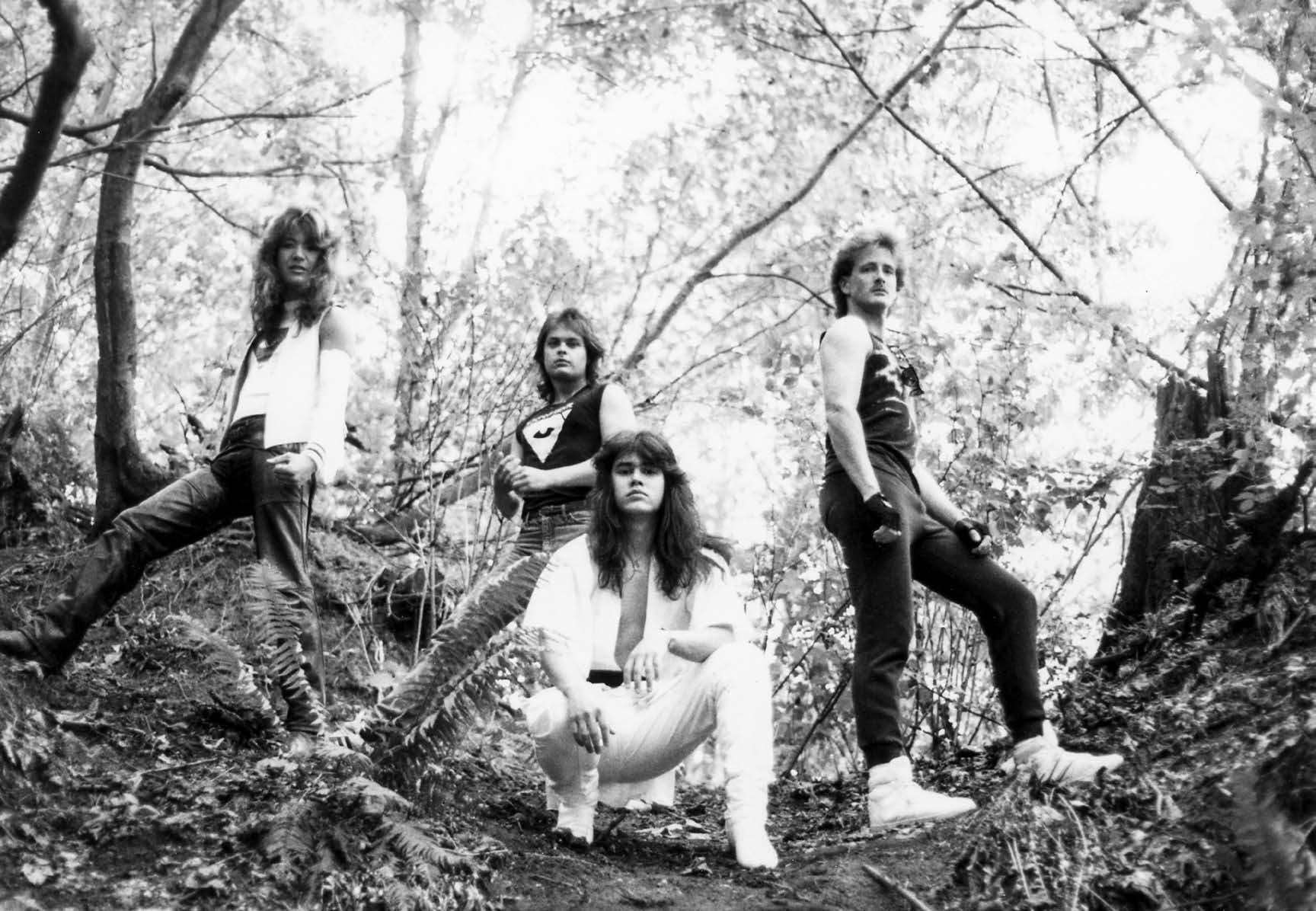Woo | Interview | “Our approach has always been quite random”
Woo, the musical project of British brothers Clive and Mark Ives, has been recording together since the seventies, releasing numerous albums that are highly regarded for their innovative blending of acoustic and electronic elements.
During that time, they have developed a sound entirely their own, combining acoustic instrumentation—primarily guitar and clarinet—with electronics in a way that reflects the past, present, and future. Their work, often described as experimental and ambient, has gained a cult following and is considered influential in various music genres.
“Our approach has always been quite random”
To begin with, when and where were you born and was music a big part of life in Ives household?
Clive Ives: Mark and I were born in South London. Mark was born in 1953 and I in 1956.
In 1963 the Beatles released their first album ‘Please Please Me’. So when I was 7 and Mark was 10 years old, we were both completely overcome with Beatle Mania! Inspired by their awesomeness, we created our first band called ‘The Tescades’. We got two of our mates involved, so we could each be one of the Fab Four. I had my grandad’s drum kit, so I guess that made me Ringo, and Mark and the other guys all had guitars. We would put on gigs for the neighbourhood kids in our street in our garage and sing ‘She loves you yeah, yeah, yeah’ into tin cans with strings, which we were convinced made the vocals louder. None of us could play our instruments…it must have been bad!
I have a vivid memory of my dad trying to get Mark and me into classical music, playing Schubert’s ‘Trout Quintet’ on our record player at 45rpm, and us discovering half way through that it should have been at 33rpm.
My mum and dad only had three records – 1912 Overture, The Trout and the musical Gigi. On rainy days when we were stuck indoors, we would play the 1912 Overture loud at 78rpm and run really fast around the dinning room table until the rain stopped.
Our main influence from our family was our uncle who played tenor sax in jazz bands. We grew up with many visits to lunchtime gigs in South London pubs with him playing in various jazz combos. In his teens Mark would sometimes play the clarinet at these gigs. Our uncle opened our eyes and ears to some of the great jazz players and even took us to see Count Basie and his orchestra. Watching the Count play his minimal piano phrases over this amazing cool orchestra was an incredible inspiration.
At what age did you begin playing music and what were the first instruments that you played?
Mark started to write songs on his guitar when he was 13. I was his biggest fan! I spent several years getting all the pots and pans out of the kitchen and bashing them to accompany his songs.
How did you decide that you want to create something together, something your very own? What were your intentions when you started playing together?
Well, as I have explained, playing music had been a part of our lives from our childhood, but recording music became something particularly special. It had the feeling of Alice going through the mirror. Once you put your headphones on and start making noises with a synth or through a mike, add a little echo and begin to layer track upon track, there is no knowing where it’s going and what mysterious moods might emerge. Our approach has always been quite random, but the process has a purity that can bring unexpected results. At their best, once a track is finished and a title is required, the words appear and there is a satisfying feeling that this title belongs. More often than not, no words appear and you end up calling it something like ‘Tea Cup’ or ‘Blocked Nose’!
What was the birth of Woo?
When I was 18, Mark had completed his time playing clarinet in the Band of the Royal Air Force. It was after he returned to Civvy Street that we became more serious with recording music. Mark bought a four-track tape deck and I bought a Roland SH3 synthesiser.
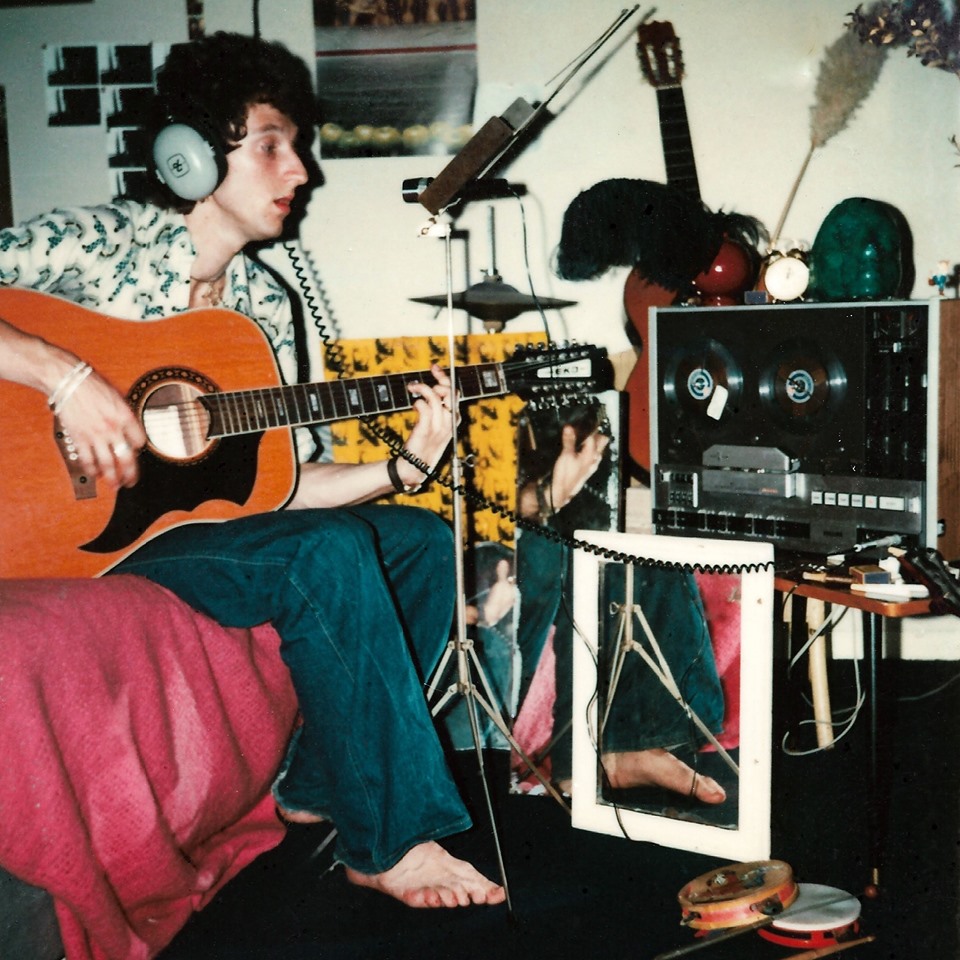
With this equipment, a few guitars, clarinet and saxophone and slightly more tonal percussion we began to record.
‘The Bird’ from ‘It’s Cosy Inside’ was one of the first tracks we made that got us completely hooked on recording. Before this time tape recorders and synths where very expensive or only available in professional studios. With the freedom to play around at home, we felt like explorers into the uncharted territory of multi tracking sound.
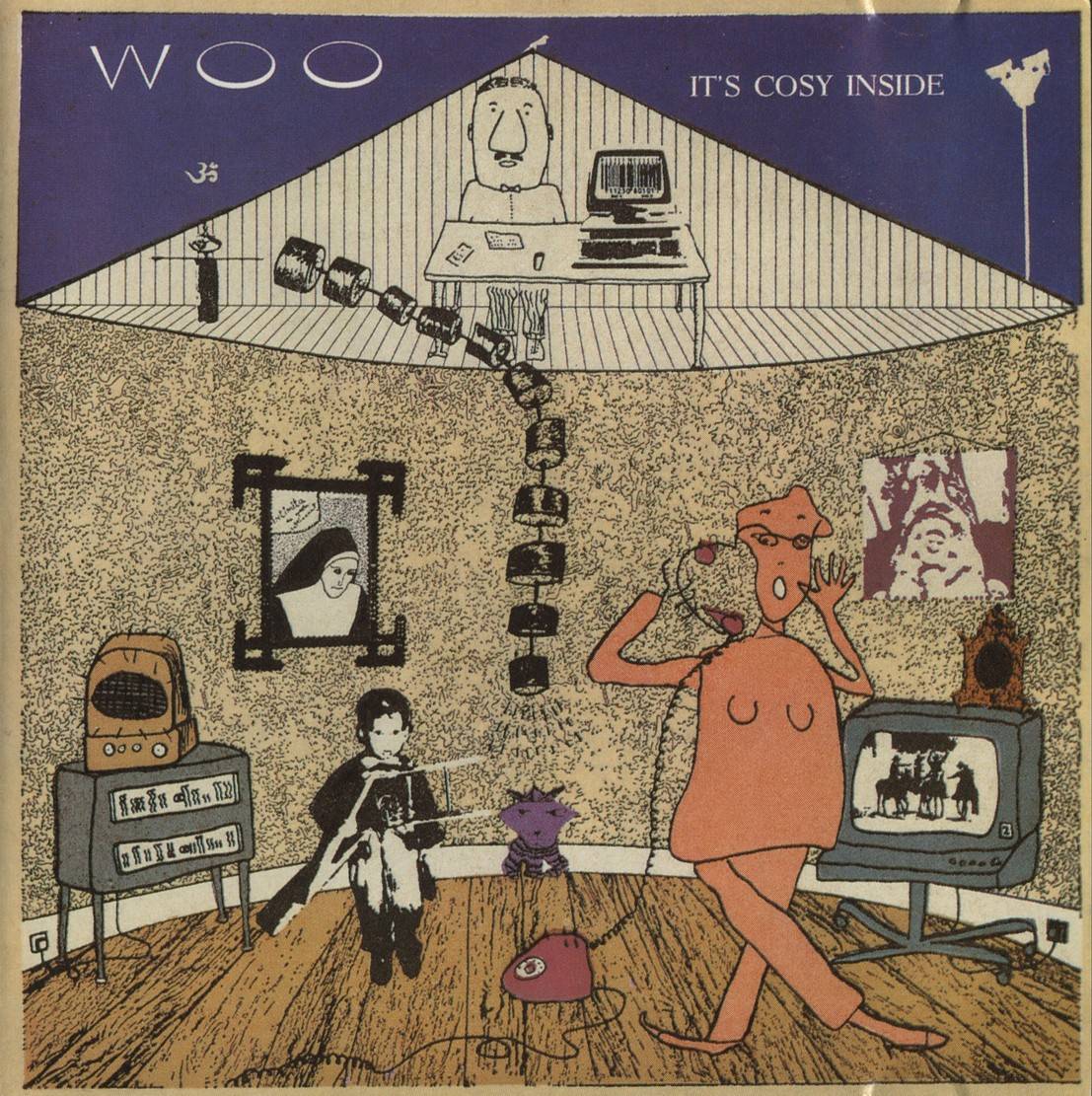
When we got a synth that could take an input from an audio cable, so I could synthesise Mark’s guitar, that was the moment I felt we found our sound. This hybrid of acoustic and electronic sound is something that has been intrinsic in how we worked for many years. This gave an amazing freedom, which allowed Mark’s compositions to be recorded directly with the electronics forming the rhythm and shape, leaving space for improvisation and expression.
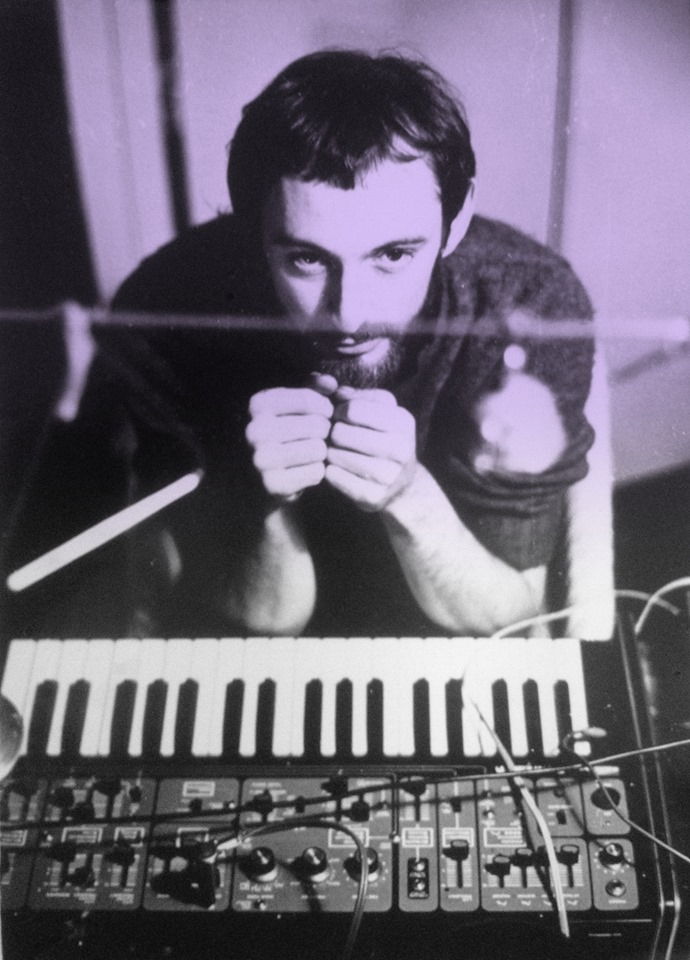
What is the main concept behind Woo and what can you tell me about the name of the project?
We have three ideas where the name came from, you can choose your favourite, because we really can’t remember which one is true!
1. We had an uncle called Fred who played a wood saw with a violin bow, it made a woooooo sound, that we liked very much.
2. There is a scene in the film ‘What’s New Pussycat’ where a very drunk Peter O’Toole is trying to help a very drunk Peter Sellars win over the love of his life, saying over and over, ‘You have to woo her, you have to woo her…..!’
3. We had a Chinese harmonica called Woo.
If there is a concept behind Woo, it is not that it is a word, but that it is a sound. Woo can be the sound you make when you’re super excited say at a rock concert seeing your favourite performer, or it can be sounded softly expressing something mystical or unknown. Both extremes speak of wonder.
In our first review from Andy Gill in 1982 in the New Musical Express he said something I have always loved about our first album.
‘Woo can sound as soft as a Martini ad, and as sharp as a stab of conscious, and sometimes brilliantly both.”
(Thank you, Andy! My mum was so proud when she read this review she cried.)
Somehow Andy’s words echo what I feel about the name and how softness and sharpness are both expressions within its sound.
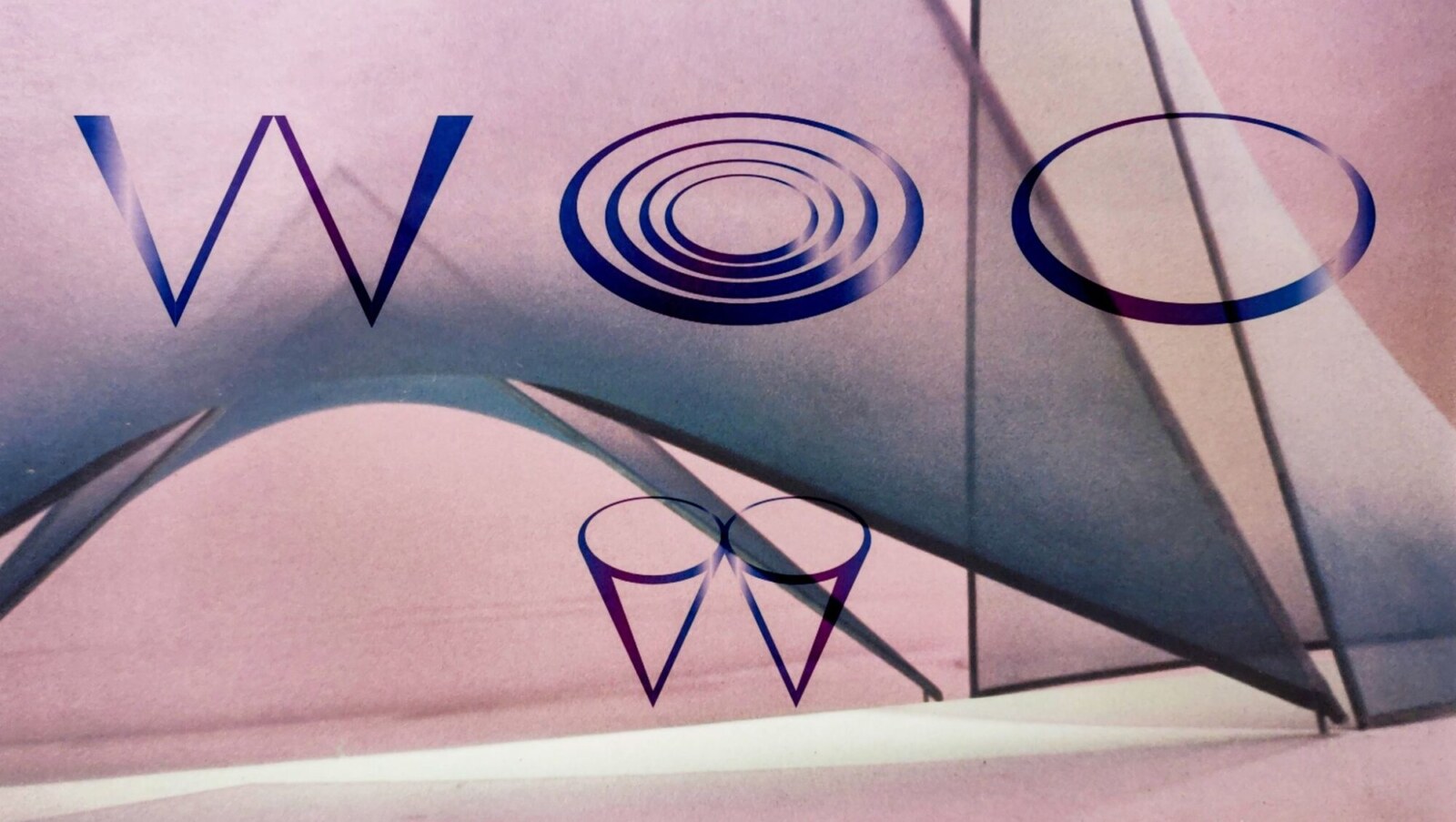
What’s the main concept behind Woo?
That’s a big question!
For the first few years I don’t think there was a concept, we were just having a great time playing around with sound. But after all these years I feel there has been an intention that has kept us both involved for so long.
In my twenties my work was in the visual arts and I have had a fascination with how the visual arts and music could be combined. One of my great inspirations was Wassily Kandinsky, who in 1912 wrote a book ‘Concerning the Spiritual in Art’. In this book he explores the basic elements of visual art – shape, tone, colour and form. He is now considered the main artist of the last century credited as the pioneer of abstract art. What he presented in his work and in his writings was a deep understanding of a universal visual language that underlies how we all perceive and interpret what we see. The first line of the introduction of the book says:
‘Every work of art is a child of its time, often it is the mother of our emotions’
In a similar way with musicians, regardless of culture and time in history, the aspiration is to explore this universal musical language and in the process express ourselves and how we feel about the world we inhabit.
The mystery of how and why music does what it does, to move us, to touch us, to inspire us, to unite us, is an endless and sublime activity.
Imagine a world without music … maybe best not!
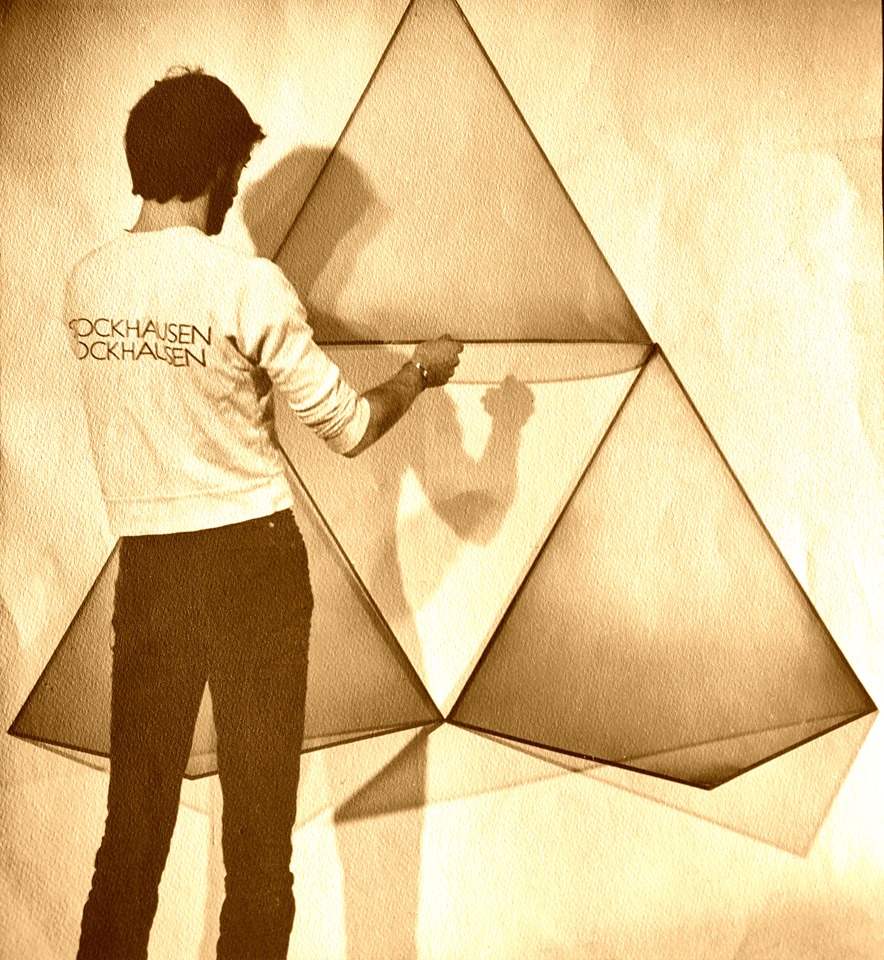
“Our approach to our music is experimental.”
How would you describe your sound?
Over the past decade, there have been many words written online about the sound of Woo.
Here are some descriptors:
Oddly dubby, mesmeric, insular, playful, undefinable, instantly recognisable, warm, romantic, optimistic, ethereal, timeless, pop music for another universe, time-locked into the spirit of ’67, witty yet quintessentially British, futuristic elevator muzak.
And here’s some genres we’ve been given:
Experimental, soft jazz, psychedelic, lo-fi, folktronica, new age, avant-garde, armchair ambient, hypnagogic pop, krautrock, kosmisch, healing music.
Our approach to our music is experimental. We put no limits on what styles we play. We will happily combine several genres. Some of our tracks come in under one minute, most are two to four minutes, few exceed five minutes. These short durations give the albums a miniature hand made feel, that, at its best, is part of their charm.
Over the years, guitars and clarinet have been mostly consistently present, yet the electronics have always been changing. We have a love of certain instruments – xylophone, trumpet, sax, strings, celeste, harp, bass and vibes and an aversion to others – flute and bagpipes.
Our sound often originates from us trying to emulate other styles of music we enjoy, using our own equipment to simulate what might have been originally created with real instruments. For example ‘The Purple Pussy’ from ‘It’s Cosy Inside’ was inspired by the Count Basie Orchestra. Mark’s clarinets are a simulation of the orchestra’s horns section, with the sequence attempting to be the rhythm section and sparse guitar and piano notes a tribute to the Count.
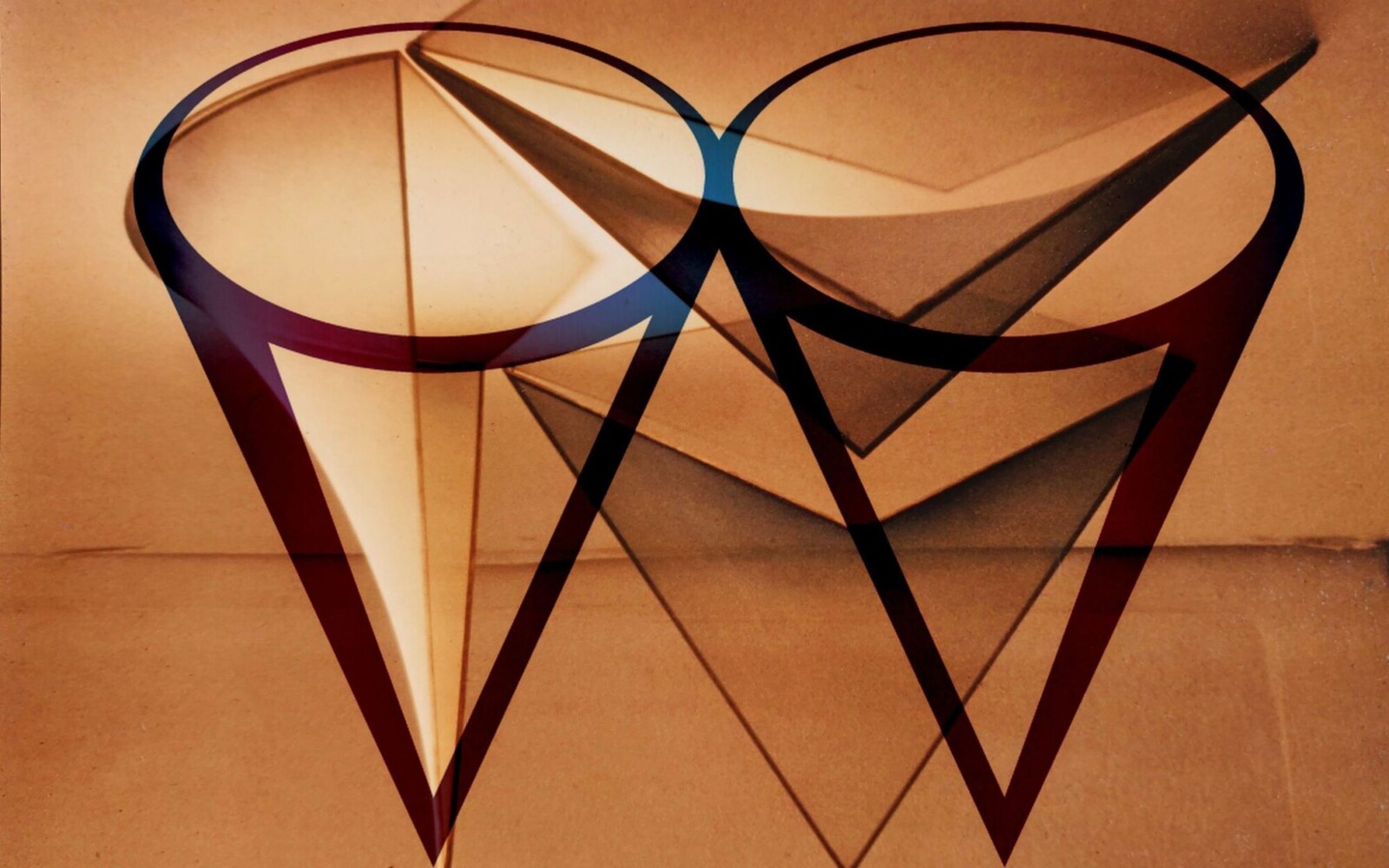
How do you usually approach music making?
Someone who wrote a review about one of our LP’s wrote the answer to this question:
‘like aliens hearing the early jazz melodies of Django Reinhardt for the first time and trying to emulate that sound using modern technology’.
You released ‘Whichever Way You Are Going, You Are Going Wrong’ via your own The Sunshine Series label. Was there a certain point in your life that you decided you want to share music with others?
That LP came after about five years of recording. It was only when we connected with Mike Alway from El Records that the album happened. Up until this time it felt that we were happily working in our own bubble and weren’t very driven to get our music out to others. In the early 80’s South London was dominated by the punk scene and our own explorations didn’t seem to fit with other styles around at the time.
Once this record had been released and we received such praise from the press, it opened our eyes, and we discovered other artists working in a similar way. It is really within the last five years after all our early albums having been re-released and our internet presence established, that we have found our audience. With the amazing availability of every type of music on the net these days, we are all so much more open to different styles and hybrids of music. This has definitely had the affect of making our music more accessible.
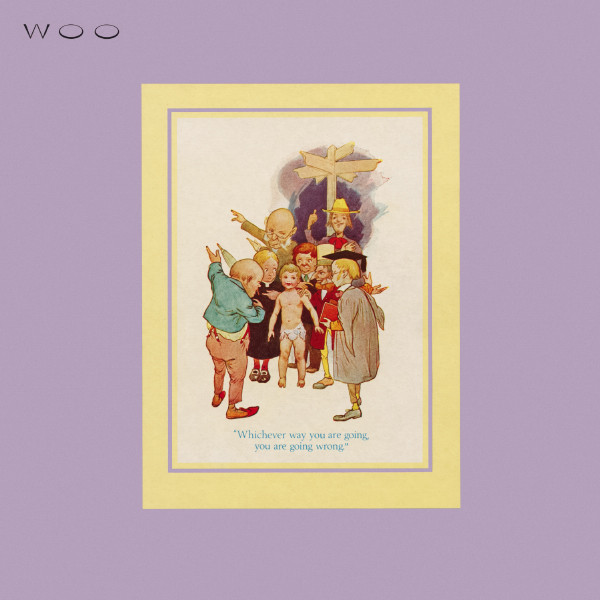
What’s the story behind ‘Whichever Way You Are Going, You Are Going Wrong’?
Mark had just returned from three months in India. He found a book in a charity shop called ‘The Water Babies’ which had the illustration we used on the front cover. The image shows a young child surrounded by various people – a teacher, an artist, a vicar – all pointing in different directions. On first impressions the title has a negative connotation, but what Mark heard was an inherently positive meaning. We have a knowing within ourselves about our own desires and destiny, so like this innocent child in the illustration, rather than listening to other’s opinions we need to pay proper attention to ourselves.
After our Andy Warhol 15 minutes of fame with the release of this LP, thirty years of relative obscurity were to follow…
“In the future, everyone will be world-famous for 15 minutes.” Andy Warhol
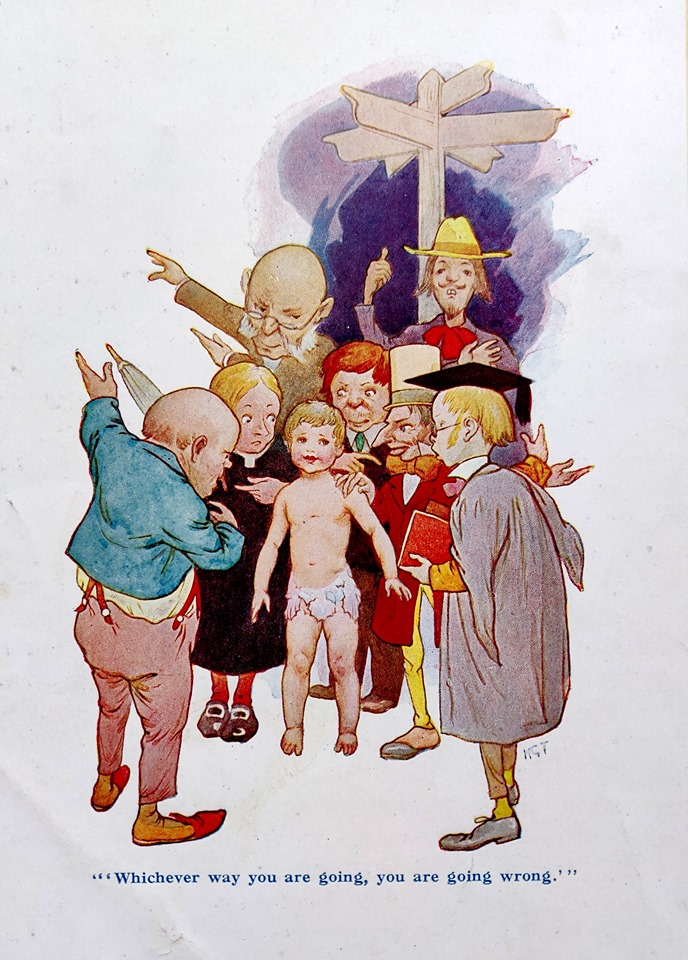
‘It’s Cosy Inside’ followed seven years later. How would you compare it to your previous release?
On the back of the success of our first LP, we made a mistake that so many artist have done. This second album was more challenging to listen to, in as much as it had more electronic sounds. The first album had more pure guitars and clarinets etc, sometimes sounding jazzy, sometimes more acoustic. As a result (not surprisingly looking back on it) when it was completed in 1983, no-one was interested in it. Fortunately, in 1989 it did get released by Independent Project Records in America, and was re-released in 2012 by Drag City, beginning a steady stream of re-releases of our past catalogue.
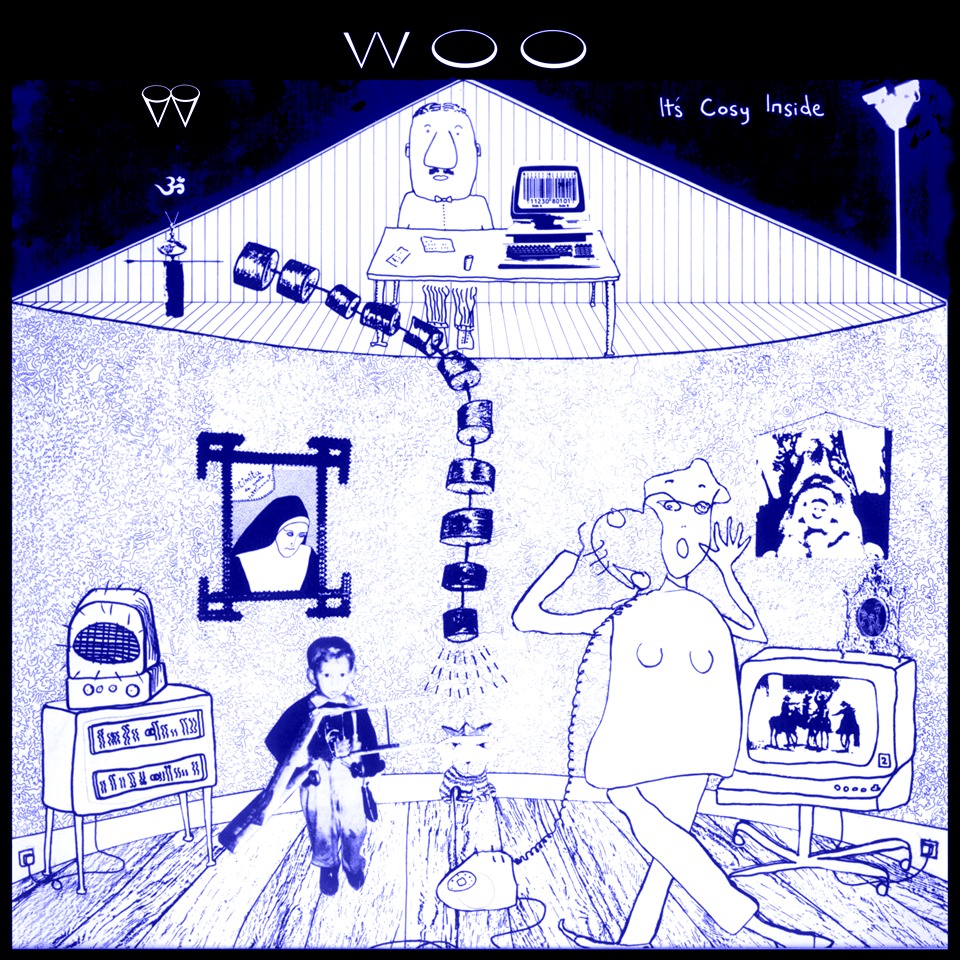
This album features the combination of Mark’s guitar play with the electronics. Sometimes I would alter what he played on my keyboard, and sometimes I would create sequences that he could improvise within. All of this was done in one take: he played and I synthesised in real time. It’s a technique that was extremely unpredictable, but great when it all came together.
The collage on the cover depicts our family: my dad in the attic on his computer (‘End of the Attic’), my mum on the phone (‘Overheard’), the little boy is me at the age of five (‘No Mans Land’) Mark’s face is upside down in a picture on the wall (‘Upside Down’). Each image in the collage is a visual reference to one of the tracks.
In the early eighties computers were becoming more commonplace in our homes. The barcode on the computer screen on the LP cover refers to our track ‘The Final Card’, this was a reference to the concept of micro chipping people and its correlations with the biblical ‘mark of the beast’. (Recently I watched a video where some people are now beginning to voluntarily accept microchips being implanted in their hands!)
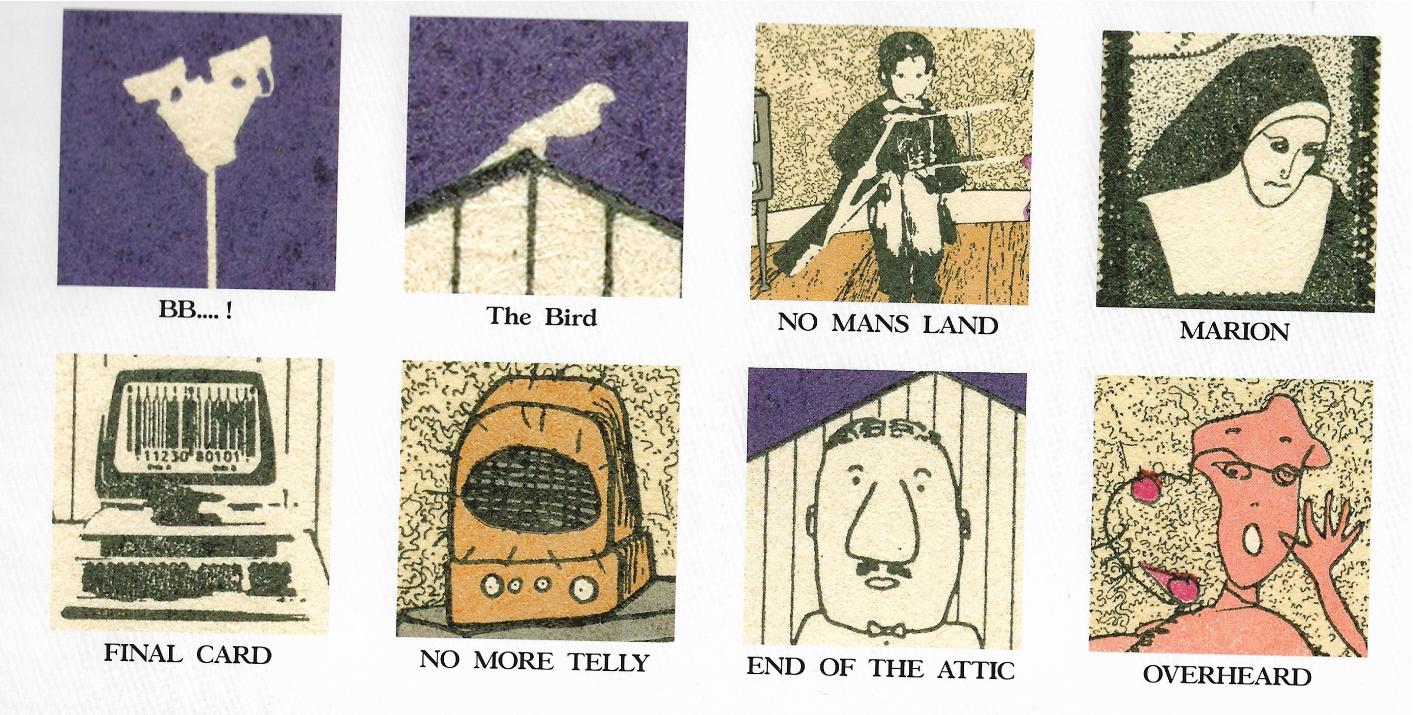
Also back in the late 70’s we witnessed the first CCTV cameras being introduced to our streets. I had just read George Orwell’s novel ‘1984’ and the book and the cameras inspired the name of the track ‘BB…!’, a reference to Big Brother.
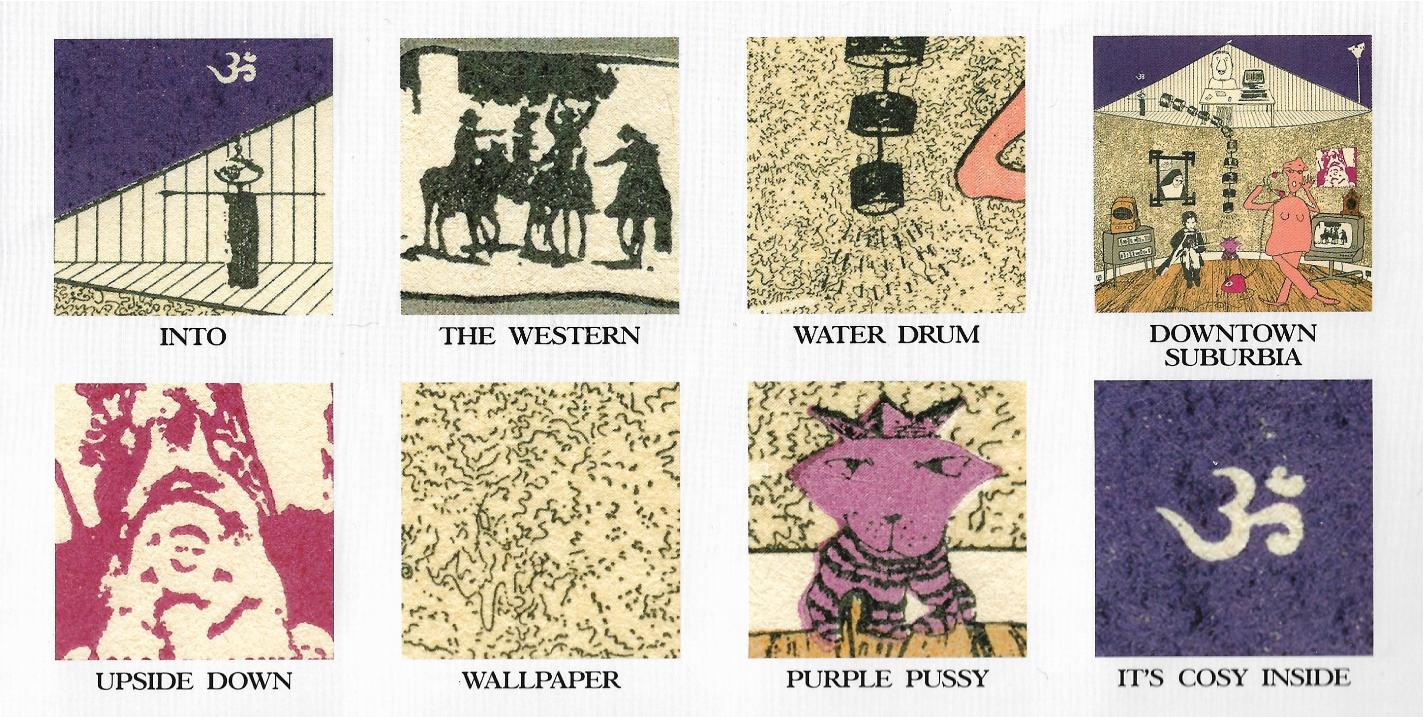
‘Into the Heart of Love’ is one of your most well known releases and its way ahead of its time. How did you approach it and would you like to share some background about it?
By the time we made ‘Into the Heart of Love’ in 1989, we had got our heads around the technicalities of recording and had more of a feel for how to make the tracks flow into each other to create a sense of completeness. Mark had written some beautiful guitar tracks and I had a few short step-time sequences that had a spacious and minimal feel.
In 1987 José Arguelles launched a word-of-mouth Harmonic Convergence campaign calling for 144,000 “Sun dancers” to gather near sacred sites at dawn on August 16 and 17 to “open the doors to the final 26 years of the 5,125-year Mayan Great Cycle,” an era ofunprecedented change and preparation for a new evolutionary cycle on Earth.
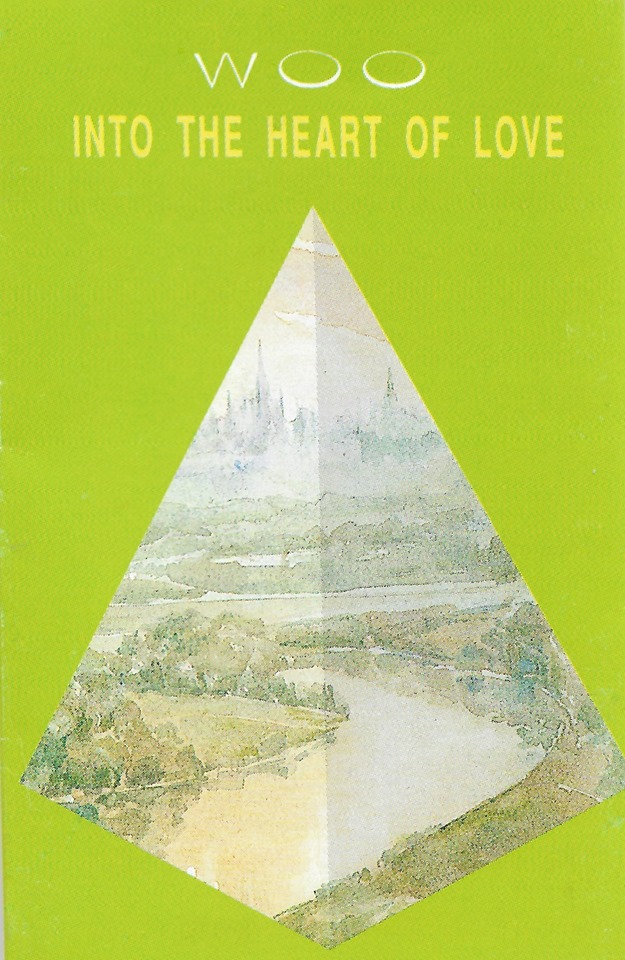
‘Hopi’, the opening track, was recorded on the night of the Harmonic Convergence.
Back then Mark and I were into all things esoteric like the Mayan Calendar and the Hopi prophecies and felt inspired to use this exact time to record some music. In the new age circles that we moved in, there was a great optimism that this moment would herald a new beginning.
The optimistic opening track ‘Hopi’ symbolised for us a new era on Earth, and the subsequent tracks would express the love and sweetness we hoped would be coming to this world.
My electronics were decidedly in the background, so the acoustic instruments could feature, giving it an intimate human touch. There is a lot of space and an unhurried tempo to the whole album, and something about the positioning of the twenty-two tracks and their varied durations gives it a timeless quality.
‘Make Me Tea’ and ‘It’s Love’ have become our most popular tracks. After this was completed and released on cassette, I started a long term relationship and we had a daughter and our recording days became more rare.
Has your musical approach changed over the years?
Not really. I feel we are still working on similar ideas. With our early recordings, it was defined by the equipment we had to work with, and some of those limitations became the inspiration for our creativity. Our equipment is so much more capable and sophisticated now and our skills more developed, but in essence the approach is still the same.
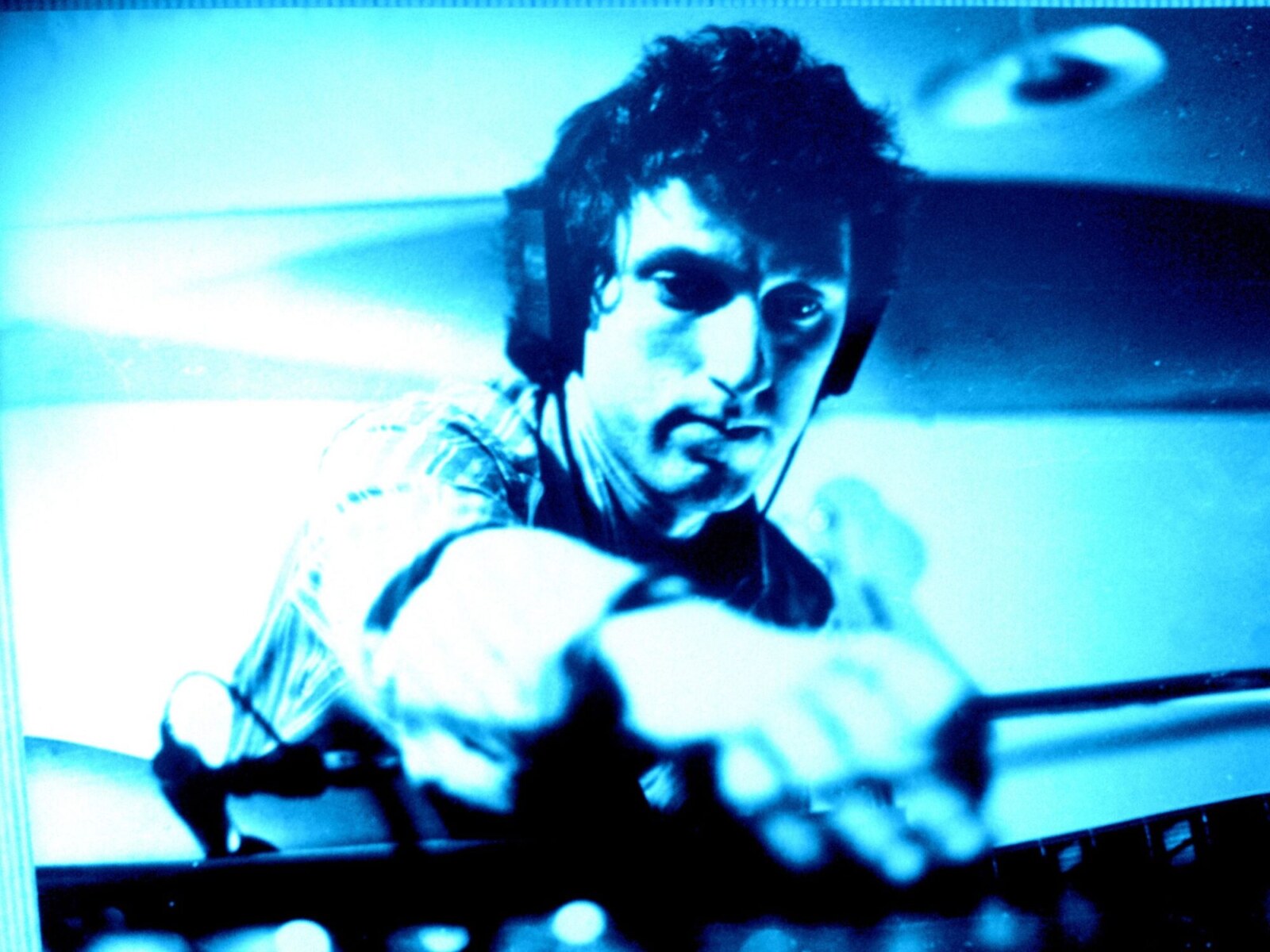
What kind of equipment do you use?
Over the forty years of recording this has changed many times.
I will be brief, incomplete and inaccurate:
1970’s – Decoder 4 track, Roland SH3 + Copycat Echo Year 1980’s – Teac 4 track, Roland System 100 + Roland Space Echo
1990’s – Tascam 8 Portastudio, Sony PCM-F1 + Betamax VCR SL-2000, Korg M1, Atari Computer, Latronic Notron Midi Sequencer
2012 Mac, Native Instruments samples, Cubase and a Panorama P1.
The Roland System 100 still works! We used it on ‘All Is Well’ a couple of years ago.
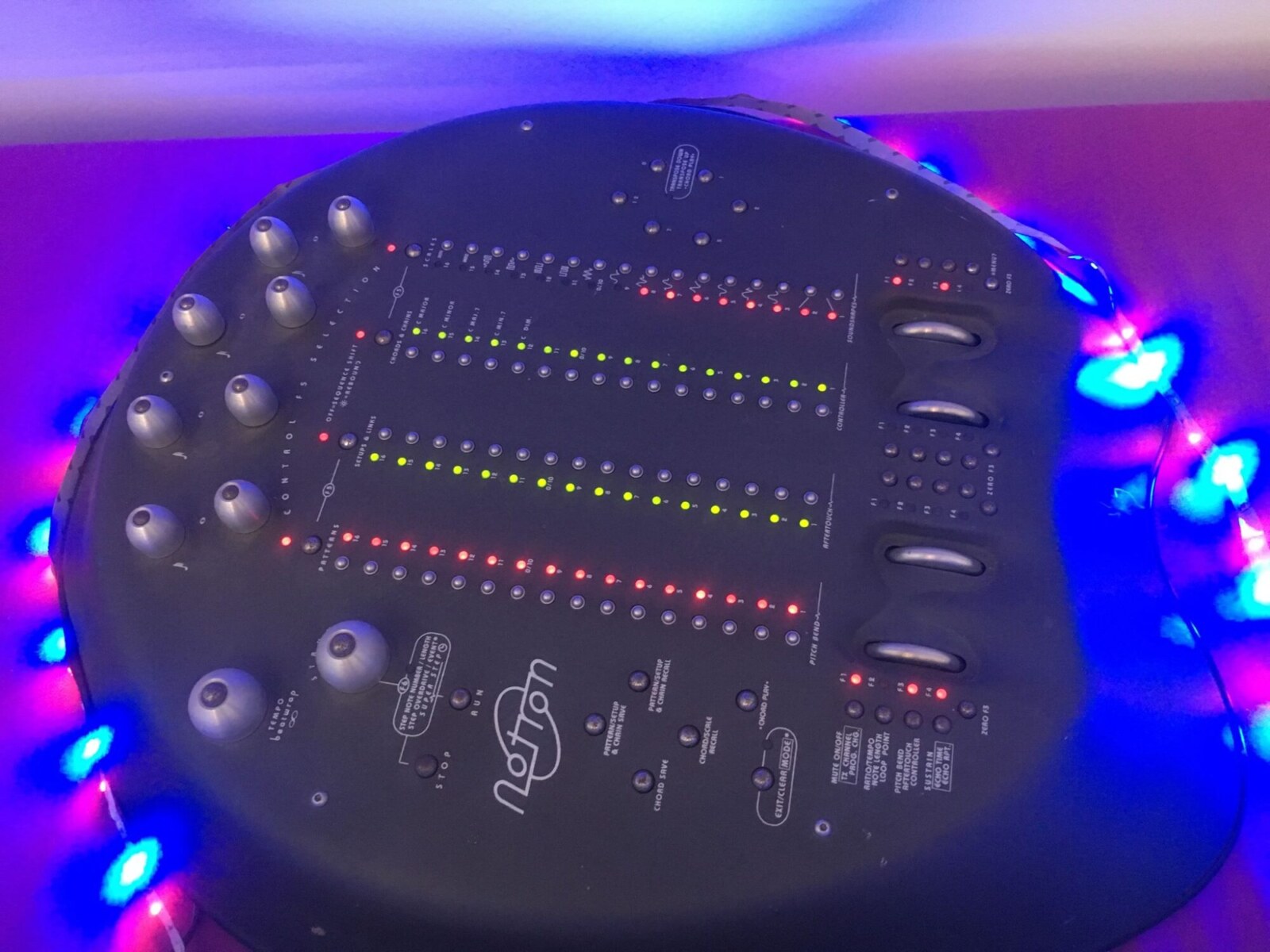
In the last couple of years you released a lot of material.
Most of the following albums where compiled from our archives over the past five years. We spend a lot of time listening and grouping previously recorded tracks into an order that feel good. Most of the albums below contain tracks that come from the 70’s, 80’s and 90’s.
‘Dobbins Lost His Coconuts’
Most of these tracks are inspired by sci-fi film scores, children’s TV theme tunes, soap opera music, fantasy films, fairground organs, and easy listening music like James Last.
‘Robot X’
In 1978 Kraftwerk released the ‘Man Machine’ album. As a tribute to ‘The Robots’ our favourite track from this album, we recorded ‘Robot X’ with Mark on vocals and Woo harmonica solo. This was the basis of an album with tracks of a similar robotic nature.
‘Woo Romantics’
This is an album of newly recorded music inspired by 1920’s and 1930’s black and white romantic movies. Creating a soundtrack with modern electronic sounds, but an old fashion flavour in the composition.
‘How To Make Your Home Look Like Space’
I spent five years living in an Osho community in the West of England where I decorated the venue when we had parties. The front cover of the album shows one of these rooms in which I converted a room to look like outer space. This collection of short quirky instrumental tracks seemed to suit the album title.
‘When My Love Goes Away’
Songs about the loss of love, heartbreak, and the end of their relationship, sung by Mark and Ruby.
‘A Dream’
One of William Blake’s mystical poems put to music with vocals by Mark and Ruby opens this album of guitar based compositions with a softer lyrical feel. It still amazes me that I was able to go online and buy the image license of this Blake painting for a fiver!
‘Xylophonics’
Sequence based tracks from the late 90’s, featuring xylophones and marimbas. I really love any percussion instrument that also has a melodic quality.
‘Forever Healing’ + ‘Planning For A Miracle’
Both these these albums are long slow ambient synth based music created to be used during healing sessions, hypnotherapy and yoga.
‘Another Place Another Time’
Some of these are old recordings, some new. They all were chosen as they were either about a particular place or a particular time. Quite a diverse mix of our compositions with a more jazzy vibe.
‘Covers’
Mark’s cover versions of classic jazz songs and instrumentals, such as ‘Try a Little Tenderness’ and ‘I’ll see you in my dreams’.
‘All Is Well’
Slowboy Records released this album of Mark’s songs and instrumentals last year. Lighthearted and playful music with a classic Woo lo-fi production. The cover is a drawing by Mark which gives a good feel of what’s inside!
Is there a lot of unreleased material?
About ten years ago we converted all our DAT tape masters from the previous 30 years to wav files. We have gone through these files and created several albums. To our amazement every time we look at these files we find more music. There is still a lot of music recorded in the late 90’s to early 2000’s that we are sifting through to use as the basis of some new releases. If we find something we like, we tend to overdub it and transform it into something more complete. Our good friend Jon Doo, who claims to be the biggest Woo fan in the world, (must be something in the name) is helping us with these selections.
How important is improvisation for you?
The ideal situation for improvisation occurs once a composition is constructed. With this foundation in place, that’s when you can get to improvise. When we are working together once a backing track is done, Mark likes to do several complete takes with guitars and bass, knowing that anything can be edited. Mark loves playing music with many people and the magic that can happen when improvising in the moment is his passion.
I am more studio based, yet still feel that recording keyboards is approached as an improvisation once the backing tracks are finished.
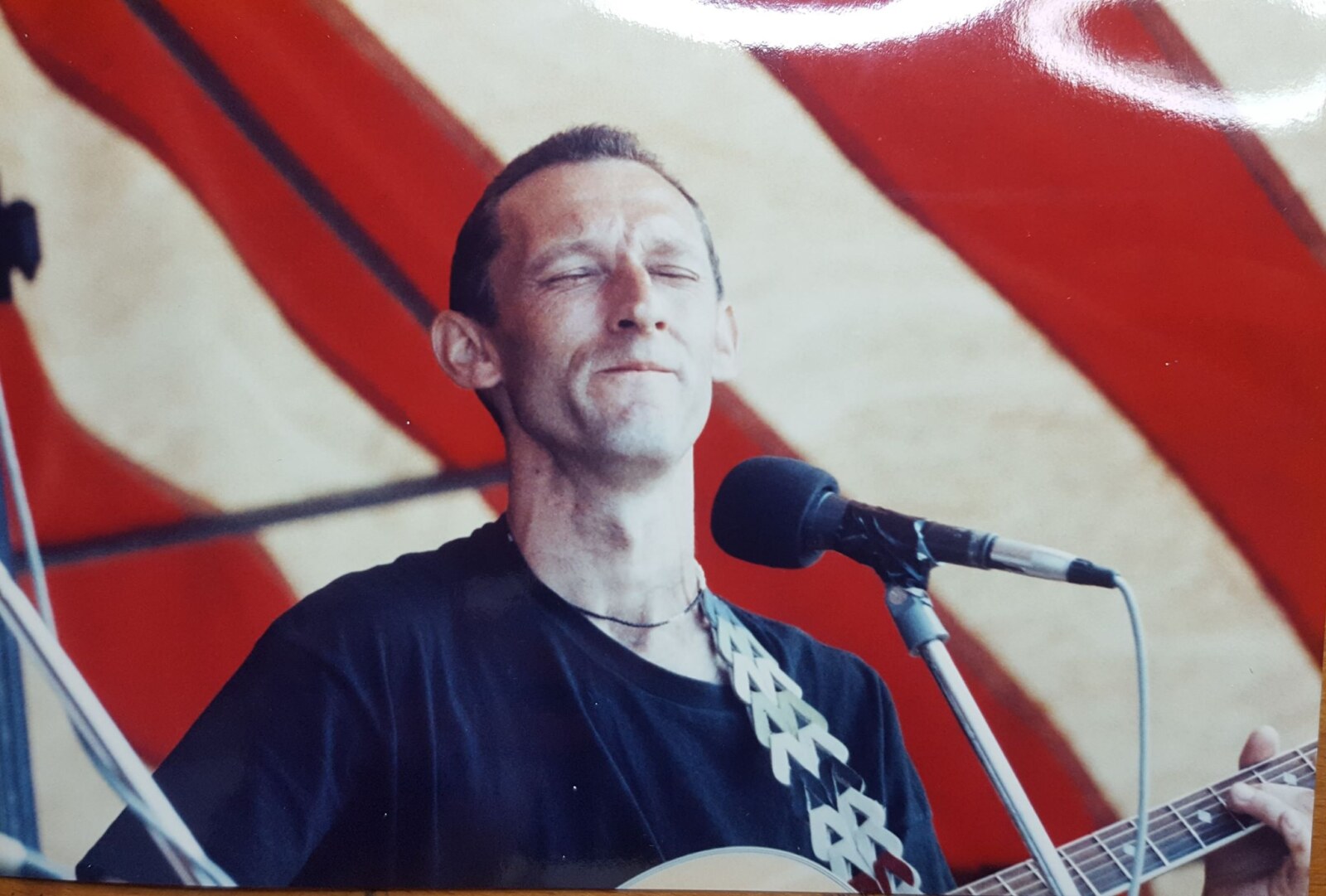
Is your material set in stone by the time you record, or is it an ever-evolving process?
It is an ever-evolving process. We often put tracks together on an album recorded 20, 30 or 40 years apart. I’m starting to feel that the cross referencing and combining of different eras has become very much part of what we do.
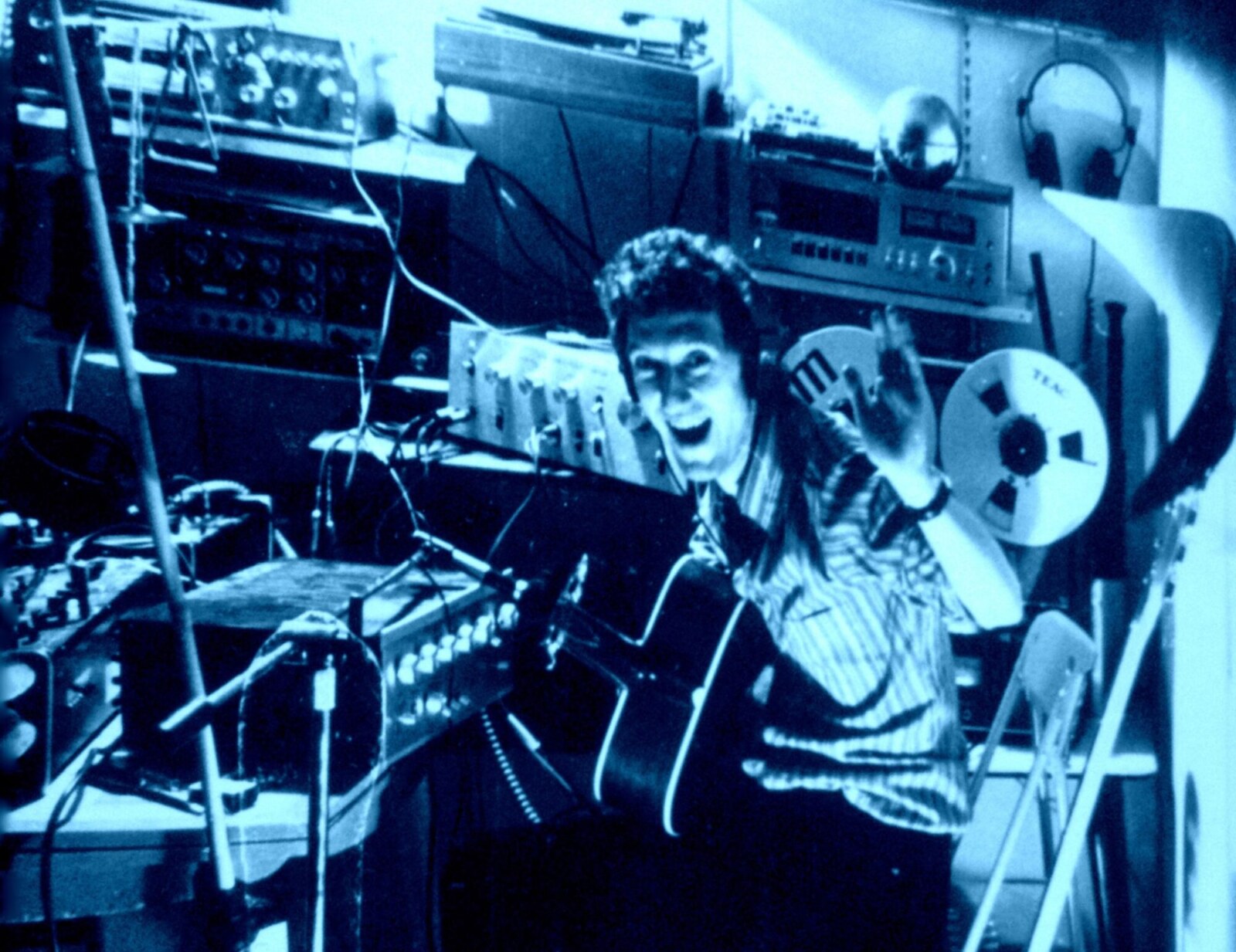
It is always tempting to go back and remix previous material.
Yes.
Many of our earlier recordings either ended badly, or abruptly, or had fads, or just fell to pieces, so with our new compilations of old tracks we have mainly reworked the ending so they link with the following track.
Have you ideas that refuse to step through the door with you? And what do you do with those sketches?
One idea from the early days of Woo comes to mind.
Remember all the times you have looked up at the night sky and seen the stars and felt the vastness of the universe. Imagine you were able to hear all these celestial constellations resonating together as a huge thick harmonic soup.
We tried several times to use this concept as a basis for a recording and called these tracks ‘grey sound’.
Initially we used the white noise generator on the Roland SH3 Synthesiser, combined with multiple layers of assorted audio. White noise is the sound you heard on old TV sets when the BBC broadcast ended every night. Black and white static danced frantically on the screen creating complex endless random patterns.
Thanks to NemArt on YouTube: TV Static Noise 10 hours, HD 1080p
Our idea of grey sound was similar to white noise, but much more intricate and harmonious, constructed out of hundreds of interweaving melodies and phrases that all combine to make a resonant and encompassing sound.
In a theory known as the Harmony of the Spheres, Pythagorus proposed that the Sun, Moon and planets all emit their own unique hum based on their orbital revolution, and that the quality of life on Earth reflects the tenor of celestial sounds which are physically imperceptible to the human ear.
To create our version of this sound still has a strong attraction, even though in the past, we were daunted by the complexity of the task. Certainly the recording equipment wasn’t up to it.
These days we can’t use the equipment as an excuse … so maybe it’s time to have another go!
What currently occupies your life? Any future projects we should expect?
Jacob from Palto Flats, who released ‘Awaawaa’ in 2016, is going to re-release ‘Into the Heart of Love’ as a double album next year. We have found some pristine DAT tape masters, so it will be great to get this finally on vinyl in its entirety. It will also have an additional song version of ‘It’s Love’ sung by Mark and Ruby.
Last year I was contacted by Niccolo’ Daniel Rufo better known as Rufus from Italy. He is a DJ, producer, radio host and has a passion for music. He wanted to start a record label and asked if we would like to be his first release. This became predominantly my project, with Mark playing guitar and bass on two tracks. I sent Rufus about thirty ‘Xyloponics’ type tracks and he selected six specifying how long he wanted them to be and the track order. For example with the title track ‘Arcturian Corridor’ he asked me to loop a one minute section of the original recording, add in a kick drum, then remix to five minute duration.
Over several months, I remixed these tracks with ongoing feedback from Rufus, until we were both satisfied with the result. I really liked all his suggestions and it felt easy to follow his lead. He then asked Ultramarine and a group of Irish guys called Wino Wagon to do remixes of two of the tracks, and to complete the second side I did a remix of ‘Love On Other Planets’. All three remixes are on the B side. It will be released this June on his label Quindi Records.
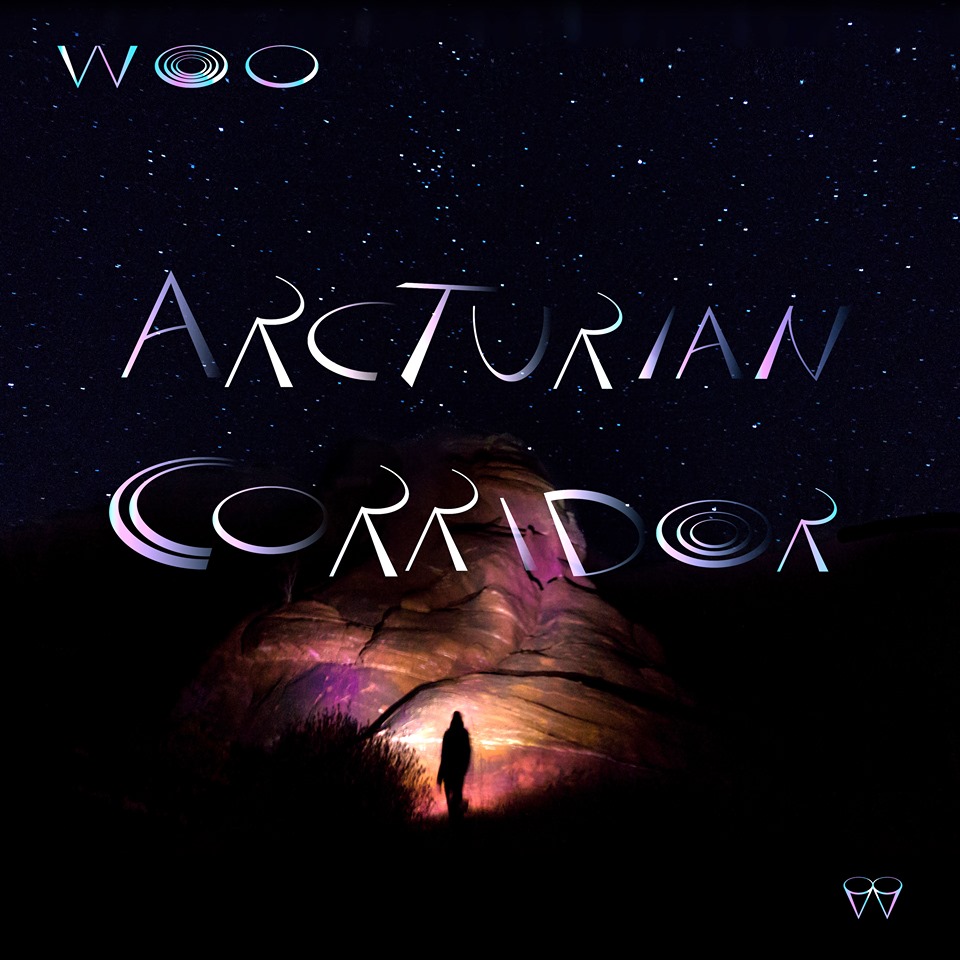
Are any of you involved in any other active side-projects?
Five years ago we worked with the English Touring Opera, who commissioned us to write the music for a show for children with special needs called ‘Waxwings’.
Later this year we will work on a new show in which we will record the music. This production will tour England with three singers and a couple of soloists in the spring of 2021.
The link has the video ‘Waxwings’.
Your music has a timeless quality to it, is that quality important to you?
‘Timeless’ in reference to music has two possible meanings.
1. That it’s hard to place when it was recorded.
2. The listener feels transported to a timeless space, For example: Eric Satie’s Gymnopedie, especially when it’s played really slowly.
I think your question is suggesting it’s number 1.
We have great love of futuristic sounds and everything electronic, and also a love and nostalgia of the first half of the 19th Century.
Growing up in the 60’ and 70’s, the BBC dominated our cultural experience. Often watching old black and white films from the silent era to the late 50’s. Mark was also hugely inspired by the great song writers of this era. Some of his more composed guitar based songs inspired from this era, were reworked and crafted for many weeks before he felt ready to put them on tape.
Generally when we’re recording, consciously or unconsciously, we are referencing back to the music from the past that we love. As our medium is electronic, these two aspects merge creating a hard to define timeline.
Certainly in some of our music both these elements can coexist.
Do you find yourself to be a perfectionist, in control, or do your ideas lead you, taking on a life of their own?
Both!
In the early stages of a new recording, we definitely allow the ideas to lead, but once something gets close to completion, the perfectionist can arrive and take over, often causing a lot of time to be wasted.
Let’s end this interview with some of your favourite albums. Have you found something new lately you would like to recommend to our readers?
Favorite albums
Todd Rundgren ‘A Wizard a True Star’
Kurt Weill ‘Lotte Lenya’
Stan Getz ‘Focus’
Frank Zappa ‘One Size Fits All’
Nino Rota ‘Movie Scores of Nino Rota’
Django Reinhardt ’The Very Best Of Django Reinhardt’
Lionel Hampton ‘Lionel Hampton’
David Bowie ‘The Rise and Fall of Ziggy Stardust’
Marlene Dietrich ‘The Essential Marlene Dietrich’
Holger Czukay ‘Movies’
Laurie Anderson ‘Big Science’
This Heat ‘Deceit’
Eyeless in Gaza ‘Photographs as Memories’
George Harrison ‘Living In The Material World’
Beethoven S’ymphony No. 9′
Prince ‘Sign of the Times’
Recommended new finds:
‘Disco is’ by Ono Syunsuke. It’s immediately engaging, funky, spacious, playful, catchy, Japanese and futuristic.
‘An Empty Bliss Beyond This World’ by The Caretaker. Deep, dark, inherently old and immersed in an ocean of nostalgia.
I think it’s created by looping old 78rpm records, featuring the clicks and the crackles which bring the past into the present and hold you in a timeless place of reflection. If these two tracks were on a 7’’ single this would definitely be the B side.
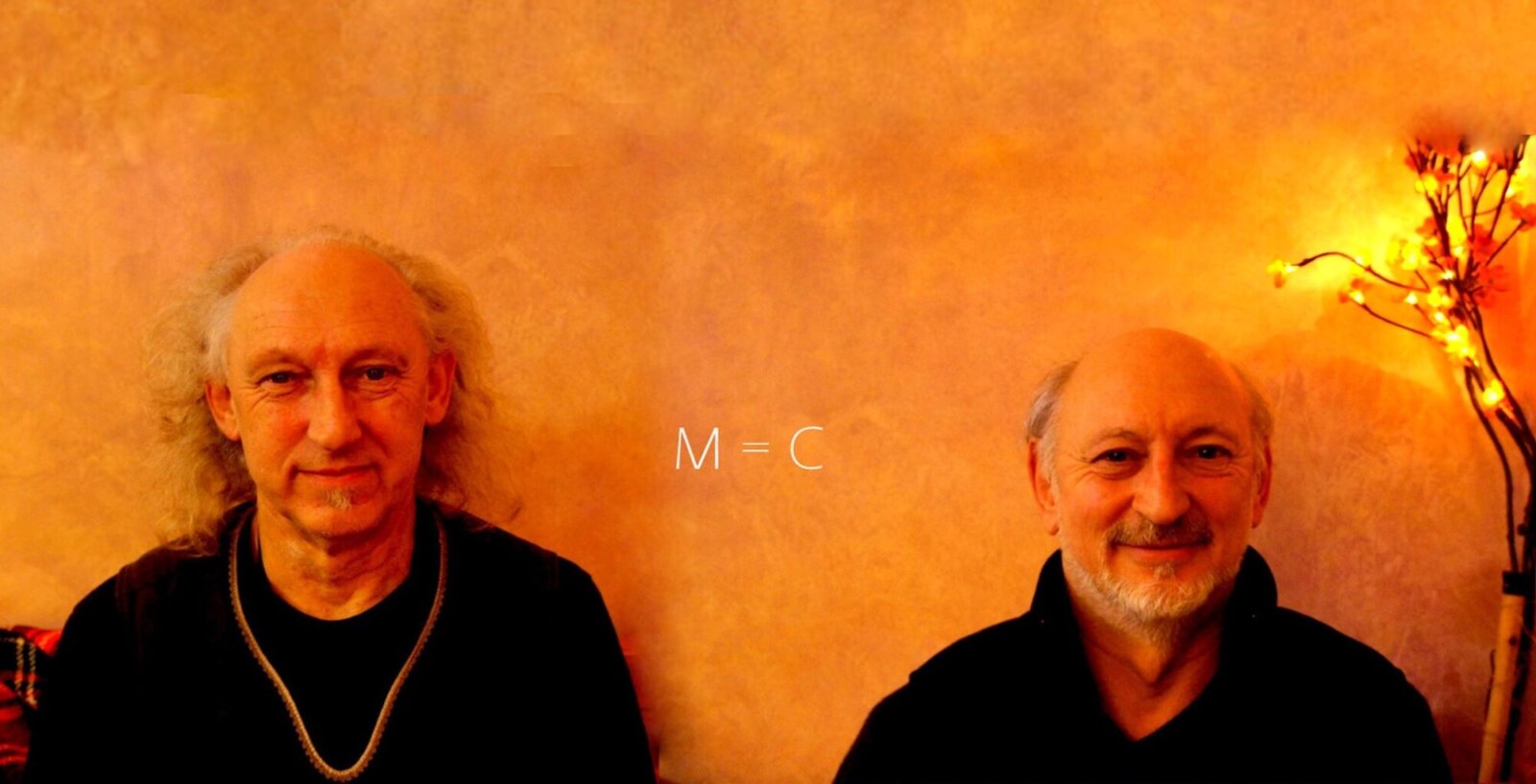
Thank you for taking your time. Last word is yours.
Thank you Klemen.
I would like to give the last words to Google Translate for their great work on Japanese language reviews of Woo albums:
Beautiful toned murmur like old European movies and soft ambience that condensed goodness.
Vaporous and happy, complete cozy, I’m breathing drastically slow.
Every moment is lethargic, hand made and jaw-dropping.
System installation is ultra-strange floating feeling.
Melody tickles the goodness, chest popping up to chase this music.
If you like the smell of previous Woo work, tell it to them.
Going to be encouraging to the next project.
Klemen Breznikar

